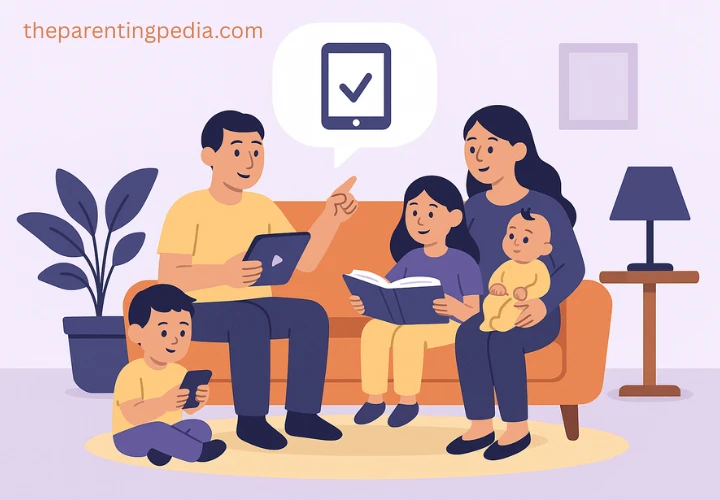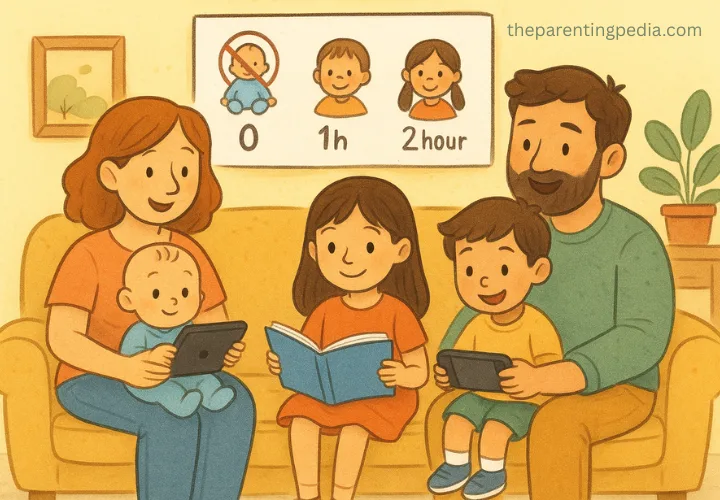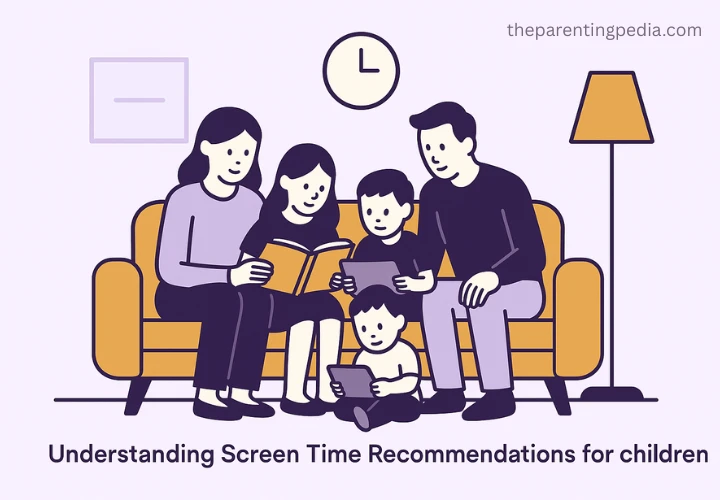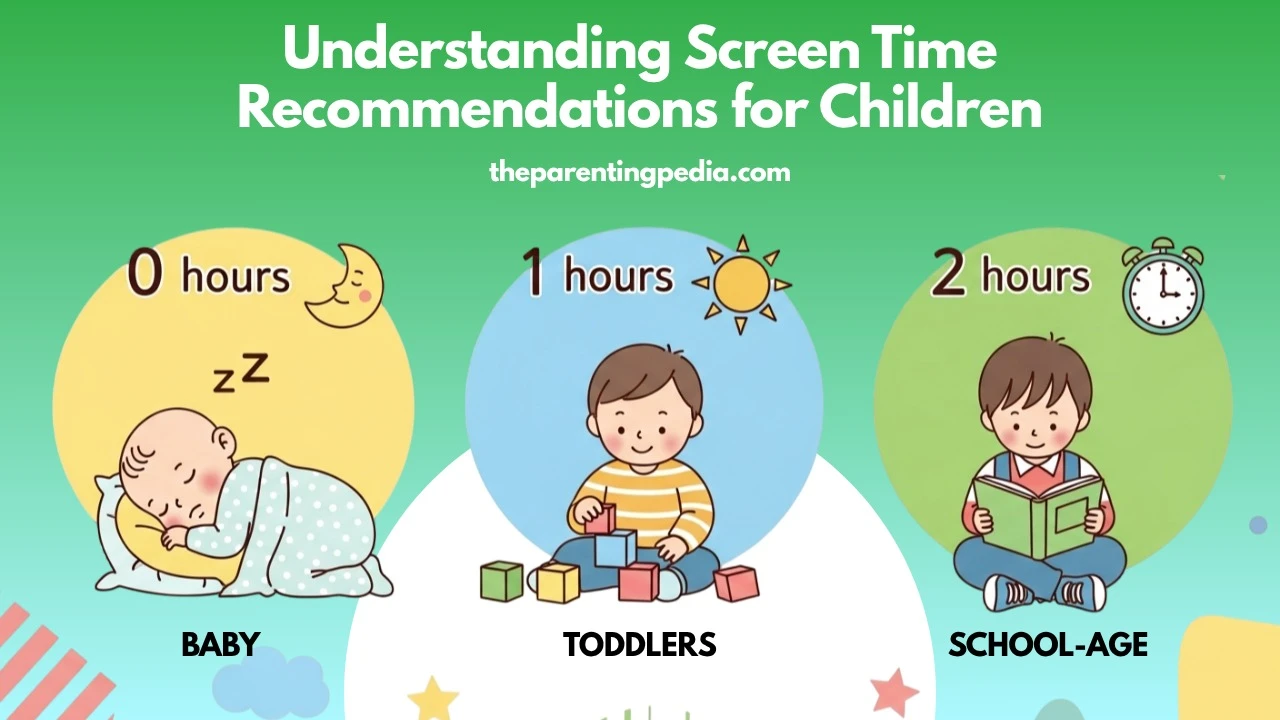In today’s digital age, screens are everywhere. From TVs and tablets to smartphones and computers, children are growing up surrounded by technology. While screens can be educational and fun, too much screen time can have negative effects on children’s health and development. This is why it is important for parents, caregivers and educators to understand the screen time recommendations for children. In this article, we will explore what screen time is, why it matters, what experts recommend for different age groups and how families can create healthy screen habits at home.
What is Screen Time?
Screen time refers to the amount of time a person spends looking at a screen. This includes watching TV, using a tablet or smartphone, playing video games or working on a computer. Screen time is divided into two types, active and passive. Active screen time is when children are doing something like using learning apps or talking to family on video calls. Passive screen time refers to when they are just watching cartoons or scrolling without doing anything, meaning they are not really using their brain much.

Why Screen Time Matters?
Children’s brains and bodies are still growing. Too much screen time can affect:
- Sleep – Bright screens can interfere with natural sleep cycles.
- Learning – Passive screen use may take time away from real life learning.
- Social Skills – Too much screen time can reduce face to face interactions.
- Physical Health – Long hours sitting in front of screens can lead to a lack of exercise.
- Behavior – Overuse of screens may lead to mood changes, irritability or tantrums especially in younger children.
Screen Time Recommendations by Age
Health experts like the World Health Organization (WHO) have given clear guidelines for screen time for children.
1. Infants (0–18 months)
The recommendation is to avoid screen time for babies, except for video calls with family. It is because babies learn best through face to face interactions and by exploring the real world around them.
2. Toddlers (18–24 months)
The recommendation is that if parents choose to introduce screens to toddlers, they should use high-quality content and watch it together. This is important because toddlers need support in understanding what they see on the screen and benefit more when an adult explains and interacts with them during viewing.
🚀 “Upload. Get a link. Share anywhere — only on ImageLink.online”
3. Preschoolers (2–5 years)
The recommendation is to limit screen-time for young children to one hour per day and to always choose high quality content. This is because real world play and interaction are much more valuable for a child’s development at this age, helping them learn social, emotional and thinking skills more effectively.
4. School-aged Children (6–12 years)
The recommendation is to set consistent limits on screen time and encourage a healthy balance between screen use and other important activities such as outdoor play, homework, sleep and family time. This helps children develop good habits and supports their overall well-being and development.
5. Teenagers (13–18 years)
The recommendation is that screen-time should never interfere with a child’s sleep, physical activity or quality face-to-face time with family and friends. It is also important to encourage open discussions about screen habits and online safety to help children make smart and responsible choices in the digital world.
💡 Do Simple Stuff. Get Cool Rewards. Click to Claim!
Understanding “High-Quality Content”
Not all screen-time is bad. Educational games, creative apps and age-appropriate videos can help children learn and grow. High-quality content helps children in the following ways:
- High quality content encourages thinking, creativity and learning
- It has no violent or harmful messages
- It is designed specifically for the child’s age group, making it easier for them to understand and learn.
- High-quality content can be watched together with a parent or adult, whenever possible.
Creating Healthy Screen Habits
Here are some tips to help families follow screen-time recommendations for children:
1. Be a Role Model
Children learn by watching adults. If they see parents using screens responsibly, they are more likely to do the same.
2. Set Clear Rules
Decide on screen-free times and areas like during meals, before bed or in bedrooms. Create a family media plan that includes how much time is allowed, what types of content are okay for children and where and when screens can be used.
3. Encourage Screen-Free Activities
Make time for play, reading, outdoor games and hobbies. These activities are important for a child’s physical and emotional development.
Also Read: Supporting Your Child’s Development With Effective Parenting
4. Watch and Play Together
Co viewing allows parents to guide their child, explaining what they are seeing and it make screen time more meaningful.
5. Avoid Using Screens as a Babysitter
While it is tempting to hand over a phone to keep a child busy, frequent reliance on screens for distraction can lead to overuse and dependency.
6. Balance is Key
Instead of cutting out screens completely, aim for a healthy balance. Screen time can be a part of the day, but it should not take over important activities like studying, playing outside, spending time with family or getting enough sleep.

Warning Signs of Too Much Screen-Time
Signs that a child may be spending too much time on screens include sleep problems, headaches or eye strain, reduced interest in hobbies or play, poor school performance, irritability or mood changes and difficulty focusing. If these signs are present, it may be time to reassess and adjust screen time habits.
Tips for Managing Screen Time by Age Group
For Young Children Under 5 Years
- Choose apps or videos that are slow paced and free from ads.
- Sit with the child while they watch content on screen, so it becomes a shared and meaningful experience.
For School-Age Kids from 6 to 12 Years
- Encourage educational apps and limit video games.
- Set homework and screen time schedules.
- Keep screens out of the bedroom to support better sleep and reduce distractions.
For Teens from 12 to 18 Years
- Parents should talk about social media, online safety and screen addiction with teens.
- Encourage face-to-face communication with friends and family rather than screen time.
- Encourage teenagers to take breaks from screens so they can relax, rest their minds and enjoy other activities too.
Creating Healthy Screen Habits at Home
Every family has its own routine, so it is important to build screen time habits that fit your child’s age, needs and personality. When thinking about screen use, consider whether it is affecting sleep, outdoor play or quality time with others. If screen time is replacing face-to-face conversations or child is losing interest in offline activities, it might be a sign to make some changes. Setting clear rules and offering fun screen-free options can help create a balanced and healthy routine in child’s life. The goal is not to completely avoid screens but to use them in a healthy and balanced way.

Conclusion
Understanding screen time recommendations for children is important in today’s digital world. While screens are a part of modern life, they should not replace the real world experiences that children need for healthy development. By following expert guidelines, choosing quality content and setting healthy boundaries, families can enjoy the benefits of technology without letting it take over. Parents should understand that their active involvement is one of the most important tools. Spending time watching, talking, and playing with their children both during screen time and in everyday moments helps them learn, grow and feel loved.
FAQ
What are the recommendations for screen time for children?
Screen time recommendations for children vary by age. For children under 2, avoid screens except for video calls. Ages 2–5 should have no more than one hour daily of quality content, watched with an adult. For older children, set consistent limits to balance screen use with sleep, play, learning and family interaction.
Why should we limit screen time for children?
Limiting screen time for children is important because too much screen use can affect sleep, attention, physical health and emotional well-being. Excessive screens may reduce time for active play, learning and social interactions. Balanced screen use helps children develop healthy habits, better focus, stronger relationships and improved overall development.
What is the 30 30 30 rule for screen time?
The 30 x 30 x 30 Rule: Every 30 minutes, look away from the screen for 30 seconds and focus on something at least 30 feet away. This technique helps keep the eyes moisturized and resets your focusing system.
How much screen time is healthy?
For adults, it’s generally recommended to limit recreational screen time to 2-4 hours per day. while work-related screen time can be higher, ideally around 8 hours. Children under 2 should have no screen time, and those aged 2 and over should have a maximum of 1-2 hours per day. Excessive screen time can have negative impacts on physical and mental health, including eye strain, sleep problems, and reduced physical activity.
What is the average screen time for a child?
The average screen time for kids varies based on age, but generally, experts recommend limiting screen time for young children. For children under 2, it’s best to avoid screen time altogether, except for video calls with a caregiver. For children aged 2 to 5, one hour of educational programming per weekday is considered acceptable, with a bit more on weekends. For older children (6 and up), healthy habits should be encouraged, and screen time should be limited to a maximum of two hours per day.
💡 Do Simple Stuff. Get Cool Rewards. Click to Claim!
